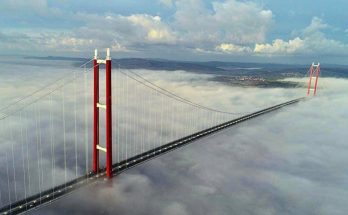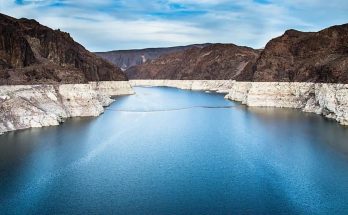Scientists have identified a previously unknown type of gamma-ray emission produced by storm clouds, shedding new light on the complex mechanisms that drive thunderstorms. Using advanced detectors aboard NASA aircraft, researchers recorded bursts of gamma radiation from tropical storm clouds, providing critical insights into these energetic processes.
New Gamma-ray Emissions Detected
Gamma rays, known as the most energetic form of light, are typically associated with extreme cosmic phenomena like supernovae and black holes, but since the 1990s, researchers have discovered that these emissions also occur within Earth’s atmosphere. Specifically, thunderstorms have been found to generate terrestrial gamma-ray flashes (TGFs), which are brief but intense bursts of radiation lasting mere microseconds. While TGFs have been linked to lightning strikes, scientists had not fully understood the range of gamma-ray emissions produced by storm clouds.
In a groundbreaking development, NASA researchers, using advanced airborne instruments, have detected a new form of gamma-ray emission within storm clouds. These newly discovered emissions, termed “flickering gamma-ray flashes,” last between 50 and 200 milliseconds, a timespan that falls between the brief bursts of TGFs and the longer, steady glows of gamma rays previously observed. This discovery provides a crucial missing link in understanding how thunderstorms generate such high-energy emissions. As physicist Martino Marisaldi explained, “They’re almost impossible to detect from space, but when you are flying at 20 kilometers [12.5 miles] high, you’re so close that you will see them.”
These flickering flashes reveal new aspects of storm cloud behavior that had eluded earlier detection methods. The insights gained from these observations could significantly advance the understanding of how thunderstorms produce radiation, particularly in relation to lightning formation. As Joseph Dwyer, a physicist at the University of New Hampshire, noted, “They’re telling us something about how thunderstorms work, which is really important because thunderstorms produce lightning that hurts and kills a lot of people.”
Advanced Aircraft Observations Reveal Abundant Gamma Activity
This breakthrough was made possible through NASA‘s ALOFT (Airborne Lightning Observatory for Fly’s Eye Geostationary Lightning Mapper Simulator and Terrestrial Gamma-ray Flashes) campaign, which utilized the ER-2 High-Altitude Aircraft. This specialized plane, a retrofitted version of the U2 spy plane, flew at an altitude of 20 kilometers (12.5 miles), allowing researchers to observe thunderstorms from just above the clouds where the gamma-ray emissions originate. Over the course of 10 flights in July 2023, the ER-2 flew over storm systems in the Caribbean and Central America, gathering an unprecedented amount of data on gamma radiation in storm clouds.
The research team initially hoped to observe a handful of terrestrial gamma-ray flashes, but the results far exceeded expectations. In total, the ER-2 detected over 130 gamma-ray flashes, a remarkable achievement that has provided scientists with a wealth of data. As Nikolai Østgaard, the lead investigator from the University of Bergen, remarked, “I went to a meeting just before the ALOFT campaign. And they asked me: ‘How many TGFs are you going to see?’ I said: ‘Either we’ll see zero, or we’ll see a lot.’ And then we happened to see 130.”
The sheer volume of detected flashes, combined with the discovery of flickering gamma-ray emissions, marks a significant step forward in understanding the energetic processes that take place within thunderstorms. These findings challenge previous assumptions about the frequency and nature of gamma-ray emissions from storm clouds and open new avenues for research into storm cloud dynamics. According to Timothy Lang, the study’s project scientist from NASA’s Marshall Space Flight Center, “If we had gotten one flash, we would have been ecstatic — and we got well over 100.”
Implications for Understanding Thunderstorms and Lightning
The discovery of flickering gamma-ray flashes and the abundance of TGFs observed during the campaign highlight the complexity of thunderstorm dynamics. Thunderstorms are now understood to produce a continuous range of gamma radiation, from short, intense bursts to longer-lasting glows. These emissions are closely tied to the electric fields generated within storm clouds, which can reach staggering intensities, comparable to 100 million AA batteries stacked in a series. Within these fields, electrons are accelerated to high speeds, leading to nuclear reactions that produce gamma rays.
What makes the new findings particularly exciting is that they may help unravel one of the most enduring mysteries of thunderstorms: how lightning forms. While TGFs have been linked to visible lightning strikes, the flickering gamma-ray flashes appear to occur independently of lightning, suggesting that they could be related to the processes that initiate lightning rather than the lightning itself. As Steve Cummer, a physicist at Duke University, put it, “There is way more going on in thunderstorms than we ever imagined.”
These discoveries could lead to more accurate lightning risk models, improving safety measures for aircraft, spacecraft, and people on the ground. Lightning is a major hazard during thunderstorms, responsible for numerous injuries and fatalities each year. By gaining a deeper understanding of the processes that generate both lightning and gamma radiation, researchers hope to develop better methods for predicting lightning strikes and mitigating their risks.
Gamma-ray Emissions in Tropical Thunderstorms
The study also uncovered new details about how tropical thunderstorms differ from those at higher latitudes in terms of their gamma-ray emissions. According to the research, large tropical storms are far more dynamic than previously thought, continuously producing gamma radiation in multiple forms. As Martino Marisaldi explained, the gamma emissions from tropical thunderstorms resemble a “boiling pot,” with bursts of radiation occurring throughout the storm, rather than the more stationary emissions seen in other types of clouds.
The size and intensity of tropical thunderstorms contribute to their unique gamma-ray behavior. Given the vast scale of these storms, which are much larger than their temperate counterparts, the researchers estimate that more than half of all tropical thunderstorms generate gamma radiation. This low-level production of gamma rays may act as a release valve, preventing the buildup of energy that could lead to more extreme events like lightning strikes or TGFs.
The study’s findings have broad implications for the fields of meteorology and atmospheric science. By revealing the full extent of gamma radiation produced by thunderstorms, researchers are gaining new insights into the electrical processes that occur within storm systems. These discoveries challenge long-standing assumptions about how storms operate and open the door to further research into the interplay between radiation, lightning, and storm dynamics.
Unraveling the Mysteries of Thunderstorms
The discovery of flickering gamma-ray flashes and the detailed observations of tropical thunderstorms represent a major leap forward in understanding thunderstorm dynamics. These findings not only provide new insights into the processes that generate lightning and gamma radiation, but also suggest that thunderstorms are far more energetic and complex than previously imagined.
As researchers continue to analyze the data collected during the ALOFT campaign, further discoveries are expected. The combination of advanced airborne instruments and the unique vantage point provided by the ER-2 aircraft has given scientists an unprecedented look into the inner workings of storm clouds, revealing the intricate mechanisms that drive some of the most powerful weather phenomena on Earth.



























